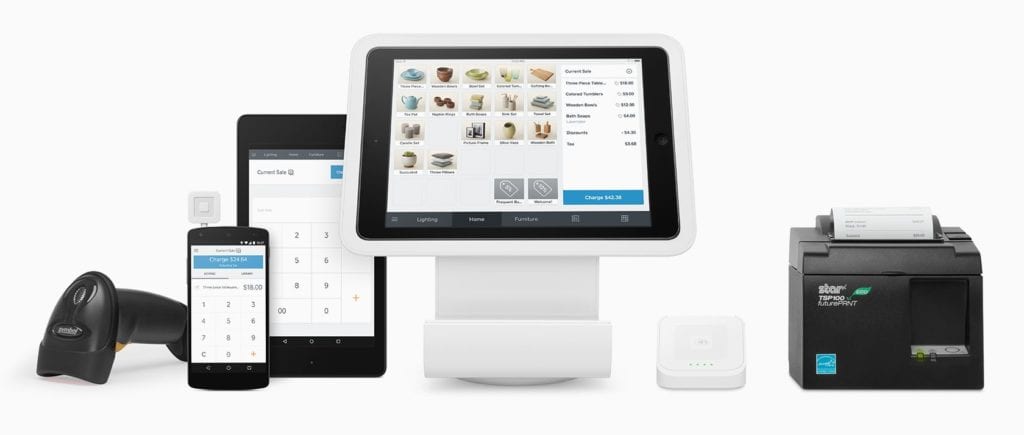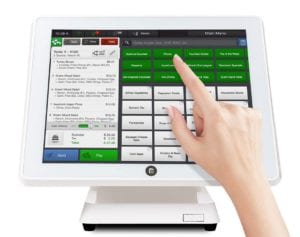Best POS Systems of 2025 | Side by Side Reviews

 In the current fast-paced retail environment, a dependable Point of Sale (POS) system is crucial for businesses of all sizes. A POS system serves as a critical tool for managing transactions and can significantly enhance operational efficiency and business operations. With a wide array of options available, ranging from traditional configurations to advanced cloud-based systems, the selection process may appear daunting. These POS software solutions are designed to meet various operational requirements of food businesses, whether through seamless integration with existing systems or offering free trials for new users. This article will examine the various types of POS systems, essential features to consider, and the numerous advantages they offer, including POS system features such as robust hardware and user-friendly interface. Additionally, it will address associated costs, pricing plans, and present some of the leading options available to assist in selecting the most suitable system for your business. Additionally, it will address associated costs and present some of the leading options available to assist in selecting the most suitable system for your business.
In the current fast-paced retail environment, a dependable Point of Sale (POS) system is crucial for businesses of all sizes. A POS system serves as a critical tool for managing transactions and can significantly enhance operational efficiency and business operations. With a wide array of options available, ranging from traditional configurations to advanced cloud-based systems, the selection process may appear daunting. These POS software solutions are designed to meet various operational requirements of food businesses, whether through seamless integration with existing systems or offering free trials for new users. This article will examine the various types of POS systems, essential features to consider, and the numerous advantages they offer, including POS system features such as robust hardware and user-friendly interface. Additionally, it will address associated costs, pricing plans, and present some of the leading options available to assist in selecting the most suitable system for your business. Additionally, it will address associated costs and present some of the leading options available to assist in selecting the most suitable system for your business.
Featured POS System Providers

Adyen
- Comprehensive Payment Acceptance
- Advanced Fraud Protection
- 0.6% + $.11/Transaction

Epos Now
- Buy as Low as $249
- Extensive Integration Options
- Flexible Hardware Solutions

Square
- Transaction Fee/2.6% + $0.10/Tap
- Detailed Reporting and Analytics
- Integrated Inventory Management
What is a POS System?
A Point of Sale (POS) system is a crucial tool for food businesses, offering both software and hardware solutions that facilitate various aspects of restaurant management. This system enables restaurant managers to process payments, monitor inventory, manage employee information, and generate comprehensive reports, thereby optimizing the sales process.
Contemporary POS systems are capable of integrating with cloud-based platforms and mobile POS options, which enhances their adaptability to diverse operational needs. Such systems are increasingly equipped with restaurant-specific features like POS software, enabling restaurant managers to track inventory and optimize the sales process. With features specifically designed for the food service industry, an effective POS system can substantially improve overall business operations.
What are the Different Types of POS Systems?
There are various types of Point of Sale (POS) systems available, each tailored to meet the diverse needs of food businesses. These include:
- Traditional POS systems
- Mobile POS systems
- Cloud-based POS systems
Traditional POS systems typically require a comprehensive hardware setup at a fixed location, while mobile POS systems offer enhanced flexibility, allowing restaurants to accept payments on the go and serve customers in various settings using mobile payments options.
Cloud-based POS systems are increasingly favored for their user-friendliness, scalability, and capability to integrate with other restaurant-specific functionalities, thereby improving overall business efficiency and offering comprehensive solutions to food service operations.

Traditional POS Systems
Traditional POS systems are grounded in a combination of restaurant-specific hardware and software, offering food businesses a reliable solution for efficient payment processing and sales management. These systems are generally positioned at a fixed location within the establishment and typically consist of a cash register, payment terminal, and a computer interface that integrates with inventory management and customer data tracking.
The robust architecture of traditional POS systems encompasses essential components such as receipt printers, barcode scanners, touch screen displays, and payment terminals, all designed to enhance operational efficiency and provide an integrated POS experience.
- These systems not only facilitate transactions but also optimize operations by monitoring sales patterns and managing inventory levels.
- Transaction fees are generally stable, enabling businesses to budget effectively without the unpredictability often associated with emerging technologies. This provides security in financial planning, even when utilizing restaurant software that demands frequent updates.
- Customer support is frequently available onsite or through dedicated phone lines, ensuring immediate assistance when issues arise.
While mobile and cloud-based solutions provide the advantages of flexibility and remote access, they may introduce complexities such as fluctuating transaction fees and a reliance on internet connectivity.
Ultimately, the reliability and established nature of traditional systems continue to position them as a strong choice for food businesses aiming to maintain control and efficiency in their operations, while ensuring data protection and customer data management.
Mobile POS Systems
Mobile POS systems have fundamentally transformed payment processing in the food service industry by enabling restaurant managers to take orders, accept payments, and manage customer loyalty programs directly at the table or anywhere within the establishment using mobile devices.
This innovative approach not only enhances operational efficiency but also significantly elevates customer service, as patrons are no longer required to wait in lengthy queues to complete their transactions, thereby improving the dining experience and customer relationship management. By allowing staff to take orders in real-time, the likelihood of errors is reduced, and customer satisfaction is increased.
- Restaurants can experience faster table turnover, thereby increasing the number of customers served during a specific timeframe.
- Through integration with customer loyalty programs, mobile POS systems can automatically track purchases and reward loyal customers.
- The collection of customer data via these systems enables restaurants to tailor their offerings according to dining trends and preferences.
Mobile POS systems are essential for fostering a more engaging dining experience while simultaneously optimizing backend operations.
Cloud-Based POS Systems
Cloud-based POS systems provide food businesses with a user-friendly platform that operates over the internet, granting access to data from any location while ensuring consistent protection and security for sensitive customer information. These systems facilitate payment processing and enable restaurant managers to leverage comprehensive sales analytics, enabling them to make informed decisions based on real-time data.
The adaptability of these systems allows users to customize features to meet the specific needs of their establishments, making them particularly beneficial for businesses that experience fluctuations in customer volume. Cloud technology, coupled with multiple devices, enables seamless adaptation to changing market conditions. This scalability ensures that the system can evolve alongside the business, integrating seamlessly with other software solutions, such as inventory management and marketing tools.
Key features include:
- Employee Management: Optimization of labor costs and enhancement of staff productivity through efficient scheduling and performance tracking.
- Customer Relationship Management: Effective customer engagement by storing important information for personalized services.
- Comprehensive Reporting Capabilities: Access to detailed reports that support strategic planning and operational improvements.
In conclusion, adopting a cloud-based POS system can significantly streamline operations while providing valuable insights through sales analytics and comprehensive solutions, establishing it as an essential tool for modern food businesses.
What Are Some of the Best Point of Sale Systems on the Market?
A variety of POS systems are currently available in the market, each designed with distinct features and functionalities that cater to the diverse needs of food businesses. Among the highly regarded POS systems are Square, Toast, Clover, Lavu, Heartland, and Limetray, recognized for their user-friendly interface and mobile payment capabilities.
Toast specializes in restaurant-specific features, making it a preferred choice for many in the industry. Clover provides customizable solutions that address various operational requirements. Additionally, Lightspeed, Epos Now, Revel Systems, POSbistro, Shopify, and Korona are noteworthy for their comprehensive software solutions that significantly enhance business management.
 1. Square POS Review
1. Square POS Review
Square is a leading point-of-sale (POS) system recognized for its user-friendly interface and mobile payment capabilities, making it an excellent choice for small to medium-sized food businesses seeking to enhance their sales processes. Its intuitive design enables restaurant managers to efficiently set up and manage operations while offering comprehensive reporting features for tracking sales and customer behavior.
This system integrates seamlessly with various hardware options, such as terminals and tablets, ensuring flexibility and ease of use in a fast-paced environment. Square also provides a suite of additional tools specifically tailored for the food industry, including inventory management and employee scheduling, which help streamline daily tasks and allow staff to concentrate on delivering exceptional customer service. Users frequently commend the straightforward setup process, appreciating the ability to begin accepting payments almost immediately. Square's compatibility with mobile POS hardware further enhances its versatility.
While the cost structure is transparent and competitive, some users have identified potential limitations regarding advanced features when compared to more robust systems.
Key Strengths:
- User-friendly interface
- Comprehensive reporting
Overall, an analysis of user experiences indicates that for many food businesses, Square successfully strikes an ideal balance between affordability and functionality.
![]()
 2. Lightspeed POS Review
2. Lightspeed POS Review
Lightspeed is a comprehensive point-of-sale (POS) system renowned for its advanced inventory management capabilities and restaurant-specific features, tailored to meet the distinct requirements of food businesses. As an integrated POS solution, it leverages cloud-based technology to facilitate real-time data access and reporting, thereby enabling restaurant managers to make informed decisions.
This robust POS software provides essential tools, including customizable menu options, flexible table management, and integrated payment solutions, which enhance the efficiency of daily operations. Users value Lightspeed’s seamless integration with various third-party applications, such as accounting software and e-commerce platforms, ensuring a holistic management experience.
Key advantages of Lightspeed include:
- Cost-effective scalability options that enable food businesses to expand without sacrificing functionality.
- Real-time analytics that enable restaurant owners to streamline operations and improve customer experiences.
However, some users may initially encounter a steep learning curve, particularly those who are not well-versed in modern technology. The true value of Lightspeed lies in its capacity to optimize both backend operations and frontline service, making it an attractive option for food businesses aiming to grow and adapt in an increasingly competitive market.
![]()
 3. Vend POS Review
3. Vend POS Review
The third-party integrations in this software allow managers to search for and add features that don't come directly from Vend.
This retail POS system helps you manage contactless payments, split payments, inventory and sales, customer profiles, and e-commerce integration. This last aspect allows businesses to seamlessly sell across digital, physical, and mobile platforms.
Vend is extremely versatile on its own but boosted greatly by the third-party add ons. You can also use it on a PC as well as on Macs and iPads. Those who are looking for maximum customization would enjoy these aspects of Vend.
Vend has been on a mission to help retailers keep up with the times and modernize their business since 2010. And they haven't slowed down for anything, which is why Vend by Lightspeed was such an opportunity- it lets us double down our efforts so that more stores can thrive.
![]()
 4. Shopify POS Review
4. Shopify POS Review
Shopify is a major e-commerce company that also offers its own POS system. Shopify POS users will get their own branded online store. They will get options, like social media, for their online sales channels.
You can also set it up so that customers can purchase items online and then pick up those items in the store.
Other helpful features include employee and inventory management, discount codes, sales, a mobile app, and analytics.
Businesses that want to have a strong presence both online and at a physical location could benefit greatly from Shopify's offerings. The support team is also available 24/7 by phone, live chat, and email.
Shopify believes in the power of sustainability and social justice. They invest their money towards renewable energy, and carbon emissions reduction initiatives as well as providing opportunities for growth among employees with programs like affordable healthcare coverage or parental leave policies because it's important to care about more than just profits when building a business.
Shopify's growth is quite an achievement. From 5 people in a coffee shop to over 1 million across the globe, they care deeply about their work and what it stands for- constant learning through change with impactful actions!
![]()
 5. Erply POS Review
5. Erply POS Review
There are three retailed-focused POS systems that Erply sells. These are a basic retail system, a POS for retail franchises, and an enterprise retail solution.
The franchise system allows franchise owners to set their own security permissions. This helps them to designate how much of the system each manager can have access to. A franchise owner is able to how much they want to centralize things like customers, inventory, and other sensitive information.
Other nifty features include inventory and sales features, tools for employee management, and barcode scanning.
Erply is a company that began as an award-winning Seedcamp entry in 2009 –hence our name, ERPly!– and was officially founded the following year. Since its establishment, Erply has designed customizations for small to medium-sized businesses with high detail requirements resulting in one of today’s most advanced inventory management platforms supporting over 100 thousand stores across 15 different languages worldwide
![]()
 6. Shopkeep POS Review
6. Shopkeep POS Review
ShopKeep is a robust point-of-sale (POS) system tailored for small to medium-sized food businesses, providing comprehensive customer management and sales reporting features that significantly enhance operational efficiency. Its user-friendly interface allows restaurant managers to effectively monitor performance metrics and customer data.
This advanced platform not only streamlines daily transactions but also enables business owners to make informed, data-driven decisions. One of its key strengths lies in its intuitive user interface, which reduces the learning curve for new staff members. Users can easily navigate through various functionalities, including inventory management and employee scheduling.
The comprehensive reporting capabilities of ShopKeep deliver valuable insights into sales trends and inventory levels, enabling businesses to optimize their profitability. The system also excels in customer support, offering assistance through multiple channels, including live chat and phone support.
- It integrates seamlessly with a variety of payment processors.
- The cloud-based access ensures flexibility for remote management through mobile POS capabilities.
- Specialized tools for loyalty programs enhance customer retention.
For professionals in the food industry, ShopKeep distinguishes itself from competitors by providing a user-friendly environment while delivering precise analytics tailored to the fast-paced restaurant setting.
![]()
 7. SalesVu POS Review
7. SalesVu POS Review
SalesVu offers its clients a variety of apps meant to help with all sorts of POS concerns. That includes invoicing, transactions, employees, inventories, gift cards, and loyalty programs.
All of the apps are essentially free. However, if users want to access those apps through one central view, they will have to pay a fee of $75 per month. Support options include an online help center with tutorial videos and a 24/7 live chat.
Those who need to perform just a few basic POS tasks could make use out of the free version of SalesVu. They can then scale up to the paid version as their business evolves if they so choose.
![]()
 8. Clover POS Review
8. Clover POS Review
Clover is a highly adaptable Point of Sale (POS) system that provides customizable solutions for payment processing and restaurant management, enabling food businesses to tailor the system to meet their specific requirements. Its diverse hardware options and extensive app marketplace offer a significant level of flexibility and integration capabilities.
This adaptability allows establishments to choose from various hardware configurations, including handheld devices, countertop terminals, and self-service kiosks. Such options enable them to create an optimized workflow that enhances both employee efficiency and customer experience.
Clover’s comprehensive app marketplace includes tools for inventory management, customer loyalty programs, and employee scheduling, all of which can be seamlessly integrated into the system.
Advantages:
- Customizable to fit unique operational needs
- User-friendly interface
- Robust reporting and analytics capabilities, comparable to systems like Lavu and Limetray
Potential Drawbacks:
- Higher costs for additional features
- Learning curve for some users
In the competitive food industry, these features, along with seamless integration with third-party applications, position Clover as a strong choice for businesses seeking to improve their service delivery and operational effectiveness, similar to solutions like Restaurant Manager and MaxxPay.
![]()
 9. Epos Now Review
9. Epos Now Review
Epos Now offers users an easy-to-use interface and it's quick to learn. This UK-based POS solutions company lets retailers use their own equipment. This is because the software works with any standard receipt printer or barcode scanner.
Also, this is the kind of POS software that employees can pick up quickly. In fact, according to the site, employees who first encounter the software will be able to use it completely after just 15 minutes.
The discount features are another positive as well.
Managers can set promotions that can be designed to run during set times of the day, or days of the week, or at specific locations.
And depending on your plan, you will get 24/7 phone support. Only email support is available for the starting service plan.
![]()
 10. Revel POS Review
10. Revel POS Review
One of the highlights of Revel's POS system is that it lets businesses track returning customers as well as those customers' favorite things to buy.
It also comes with all of the essential features, including analytics, inventory and sales, and employee management.
Revel POS Insights, the system's mobile app, lets managers learn pertinent information, even when they're away from a computer.
It's important to note that Revel POS doesn't come with a free trial but it does come with a free demo of the product.
Revel Systems is the first iPad POS system to hit the market. They have been refining their product and working alongside customers ever since, with a goal of offering an intuitive yet powerful cloud-based platform that can quickly adapt – even grow together as your business needs change over time! Their expert team works closely alongside you every step towards achieving this solution; ensuring we're all on board in order to maximize value from both Revel's software solutions AND YOUR INNOVATIVE TEAM'S efforts too.
In the last mile, Delivery XT offers a full range of services to help you deliver your products in confidence. The features that make this one-stop solution so appealing include: live tracking and notifications for customers; an app that allows drivers easy access while on route or parked at their destination waiting till they're called upon again by Amazon's system (so no need to keep checking up via phone); as well mainstreaming both online shopping AND doorstep delivery into contemporary lifestyles through its innovative approach towards logistics management–allowing consumers ultimate convenience without sacrificing quality.
![]()
What Features Should You Look for in a POS System?
When selecting a point-of-sale (POS) system for a food business, it is essential to consider several critical features that can greatly impact efficiency and profitability, including easy-to-use systems like POSbistro, Square, Toast, NCR, and Lightspeed, which offer diverse payment options and software solutions.
Key among these are:
- Robust inventory management capabilities, which allow for accurate tracking of stock levels;
- Detailed sales reporting, which supports well-considered choices;
- Effective customer management tools that facilitate relationship-building;
- Employee management functionalities that aid in scheduling and performance tracking.
Additionally, seamless integration with other systems is vital to establish a comprehensive solution that fulfills all operational requirements.
Inventory Management
Effective inventory management represents a fundamental aspect of any Point of Sale (POS) system, enabling food businesses to track inventory levels in real-time, mitigate waste, and ensure adherence to food safety management standards. Integrated with online ordering and supplier integration, these systems offer a holistic view of inventory processes. With advanced tracking capabilities, restaurant managers can efficiently monitor stock usage, forecast demand, and manage reorder processes with ease.
This functionality plays a significant role in optimizing operations by providing insights into the most popular menu items, thereby allowing businesses to intelligently adjust their offerings to align with customer preferences. For example, high-quality inventory management solutions feature automated inventory reconciliations, which reduce the potential for human error and conserve valuable time. Additionally, predictive analytics tools enable restaurateurs to anticipate peak periods and adjust stock levels accordingly, enhancing customer satisfaction by minimizing the risk of out-of-stock items.
- Real-time tracking: Ensures accurate stock levels, thereby reducing both shortages and overstock situations.
- Supplier integration: Streamlines the procurement process by facilitating easier ordering from suppliers.
- Recipe cost tracking: Assists in maintaining profitability by analyzing the cost of ingredients in relation to menu pricing.
Ultimately, by leveraging these features within a POS system, food businesses can engage in more well-considered choices, enabling them to thrive in a competitive landscape while effectively managing operational costs.
Sales Reporting
Sales reporting is a crucial functionality of Point of Sale (POS) systems that equips restaurant managers with comprehensive reports and analytics on sales performance, supporting strategic market research and informed decision-making. This capability enables managers to identify trends and make informed, data-driven decisions. By leveraging this feature, food businesses can evaluate product performance, recognize popular items, and optimize pricing strategies to enhance profitability.
The reporting functionalities include various reports, such as daily sales summaries, inventory usage, and sales categorized by product type. This breadth of reporting allows managers to identify current trends and adjust their inventory accordingly. Utilizing these detailed reports can significantly improve strategic planning within the establishment. Advanced POS software solutions, like Lavu and Revel Systems, enhance these capabilities by providing more customized reporting options.
- Sales Growth Reports: These reports highlight overall revenue changes, helping with the assessment of business success.
- Customer Purchase Behavior: By analyzing average transaction values, these reports provide insights into customer preferences.
- Seasonal Trends: Understanding sales fluctuations can inform promotional strategies during peak periods.
Many leading POS software solutions, such as Toast and Lightspeed, incorporate advanced sales analytics tools that further enhance operational efficiency by offering real-time data analysis, forecasting capabilities, and customizable dashboards. Consequently, these tools enable restaurant managers to streamline operations and make timely decisions that align with customer demands by integrating business management features.

Customer Management
Customer management capabilities within a point-of-sale (POS) system, like those found in SpotOn and Loyverse, allow food businesses to efficiently manage customer data, thereby enhancing their relationships with patrons through targeted marketing and loyalty programs. By collecting and analyzing customer information, restaurant managers can customize promotions and improve the overall dining experience.
These capabilities extend beyond merely storing customer names and emails; they fundamentally transform how establishments engage with their clientele on multiple levels. Leading systems, like Clover and Epos Now, incorporate customer relationship management (CRM) tools designed to track purchasing behavior, note preferences, and schedule special offers based on dining habits.
For instance, a restaurant utilizing a sophisticated POS system may identify repeat visits and reward loyal customers through:
- Exclusive discounts
- Personalized recommendations
- Invitation-only tasting events
Such features not only promote customer loyalty but also provide restaurants with valuable insights that can inform menu offerings and promotional campaigns. A system that effectively integrates loyalty programs fosters sustained engagement, enabling businesses to collect richer data. By understanding the factors that drive customer choices, food establishments can swiftly adapt to emerging trends, ensuring a memorable experience that encourages patrons to return.
Employee Management
Employee management features in POS systems, like those provided by Heartland and Limetray, effectively streamline scheduling, performance tracking, and payroll management, thereby simplifying the operational aspects of managing a food business. By enabling the establishment of shifts, monitoring of employee hours, and assessment of performance metrics, restaurant managers can significantly enhance workforce productivity and efficiency.
These systems provide a range of functionalities that can greatly improve team organization and operational efficiency. For example, tools such as 7shifts and Square POS offer intuitive scheduling interfaces that allow managers to assign shifts with ease, taking into account employee availability and fluctuations in demand. By leveraging performance tracking features, managers can analyze sales per labor hour and identify top performers within their teams. Furthermore, payroll functionalities often integrate seamlessly with time clock systems, minimizing errors and ensuring timely compensation.
- Automated reporting: Managers gain insights into labor costs and productivity metrics, which support data-driven decision-making.
- Employee self-service portals: Employees can submit their availability and request time off, fostering a sense of ownership and enhancing overall job satisfaction.
The comprehensive suite of tools available in modern POS systems, such as those offered by NCR and Korona, not only simplifies management tasks but also strengthens team dynamics and productivity.
Integration with Other Systems
Integration with other systems is a critical feature of modern Point of Sale (POS) systems, like those provided by Shopify and MaxxPay, facilitating seamless connectivity with software solutions such as accounting, online ordering, and inventory management platforms. This capability enables food businesses to develop a comprehensive solution tailored to their specific operational requirements, leveraging cloud technology for enhanced accessibility and data synchronization.
Such integration ensures that various operational components can communicate effectively, thereby minimizing the risk of errors associated with manual data entry. By linking the POS system to these essential applications, businesses can streamline processes, reduce operational costs, and improve overall service efficiency.
For instance, the automatic synchronization of sales data from the POS system with accounting software not only saves time but also provides accurate financial insights that support better decision-making. Furthermore, integration with inventory management systems allows for real-time tracking of stock levels, facilitating proactive inventory control and reducing waste. Additionally, features such as customer relationship management (CRM) can enhance customer satisfaction through personalized service, tailored promotions, and comprehensive loyalty programs.
Thus, the significance of integration capabilities in POS systems cannot be overstated, as they form the backbone of effective business operations, ultimately driving growth and profitability.
What are the Benefits of Using a POS System?
Utilizing a Point of Sale (POS) system, like those offered by 3S POS and PayPal, provides a range of benefits that can substantially improve the efficiency and profitability of food businesses. These advantages encompass streamlined operations that minimize the time dedicated to repetitive tasks, enhanced efficiency in transaction processing, and improved customer experiences through expedited service and precise order management.
Moreover, access to real-time data enables restaurant managers to make informed decisions and refine their business strategies effectively.
Streamlined Operations
Streamlined operations represent one of the primary advantages of implementing a POS system, such as those from POSbistro and NCR, as it automates and simplifies various tasks associated with business management, ranging from order processing to inventory tracking. By centralizing data within a single interface, restaurant staff can perform their responsibilities more efficiently, leading to enhanced service delivery and reduced operational costs.
The adoption of such systems facilitates automated tasks, significantly minimizing the manual workload on staff. For example, inventory levels can be monitored in real time, alerting management when stock is low and enabling automatic reordering, which helps prevent stockouts and enhances overall efficiency. Additionally, the integration of online order systems allows for seamless processing, ensuring that orders are accurately captured without the risk of human error.
- User-friendly interfaces assist employees in quickly learning the system, thereby enhancing overall productivity.
- Automated sales reports and analytics provide valuable insights into sales trends, supporting well-considered choices.
- Staff can easily split bills, apply discounts, or manage payments through intuitive software solutions.
These advancements in POS technology not only streamline operations but also improve customer satisfaction by ensuring faster service delivery and greater accuracy in order fulfillment.
Increased Efficiency
Increased efficiency is a notable benefit of implementing a POS system, such as those from Square and Revel Systems, as it facilitates rapid transaction processing and minimizes human error during order entry. With features such as mobile payments and customer management tools, food businesses can serve guests more quickly and accurately, thereby enhancing the overall dining experience.
The integration of advanced analytics into POS systems enables restaurant owners to monitor sales trends and inventory levels in real-time, which supports proactive decision-making. For example, quick-service restaurants like Chipotle utilize these systems to streamline order inputs and payment processing, significantly reducing wait times. Likewise, fine dining establishments employ tablet-based POS solutions to provide tableside ordering, which personalizes the service experience and enhances customer satisfaction.
Key features include:
- Mobile Payments: Accepted via smartphones, thereby reducing transaction times.
- Customer Management: Assists in building customer loyalty by storing preferences.
- Reporting Tools: Offer insights to improve menu offerings and operational efficiency.
Consequently, successful food businesses are not only increasing their operational efficiency but also fostering customer retention through enhanced service quality.
Improved Customer Experience
An enhanced customer experience is a significant advantage of implementing a Point of Sale (POS) system, such as those from Lightspeed and Lavu, as it streamlines the ordering and payment processes. This efficiency enables guests to fully enjoy their dining experience without unnecessary delays. By utilizing customer data, restaurant managers can personalize interactions, implement effective loyalty programs, and ultimately increase guest satisfaction.
The accuracy of orders is substantially improved when utilizing a POS system, thereby minimizing errors that could lead to customer dissatisfaction. Furthermore, the speed of service is enhanced, allowing staff to efficiently take orders and process payments, which facilitates a more enjoyable dining experience for customers without prolonged waiting times. These are some of the notable POS system features that contribute to better service quality.
The integration of personalized engagement tools allows businesses to tailor promotions and services according to individual customer preferences. This personalized approach not only fosters a deeper customer connection but also maximizes the effectiveness of loyalty programs, encouraging repeat patronage. Effective POS software can significantly aid in this process.
The following elements are essential for improving the customer experience:
- Order Accuracy: Minimizing errors in order placement.
- Speed of Service: Reducing wait times for food and payment.
- Personalized Engagement: Utilizing customer data to enhance interactions.
These enhancements ultimately contribute to creating a more satisfying dining environment, where customers feel valued and understood.
Real-Time Data and Reporting with Integrated POS Systems
The real-time data and reporting capabilities provided by integrated POS systems are crucial for food businesses, enabling managers to access current information regarding sales, inventory, and customer behavior. This data-driven approach facilitates informed operational decision-making and the development of effective marketing strategies.
The importance of real-time data transcends mere quantitative analysis; it enables businesses to respond swiftly to market fluctuations. By utilizing a POS system, managers can analyze various types of data, including employee performance metrics and inventory turnover rates:
- Daily sales reports
- Inventory turnover rates
- Customer purchase trends
- Employee performance metrics
For example, if a sudden increase in demand for a specific menu item is observed, the system enables immediate adjustments in inventory orders. Furthermore, by examining customer behavior, such as peak visiting times and popular dishes, businesses can refine their marketing campaigns to align more closely with consumer preferences.
The strategic integration of real-time data into operational practices significantly enhances productivity and customer satisfaction.

How Much Does a Point of Sale (POS) System Cost?
Understanding the cost of a Point of Sale (POS) system is essential for food businesses, as it generally involves multiple pricing structures that encompass upfront costs, monthly fees, and potential additional expenses for features and services.
Upfront costs may include expenses related to hardware and software installation, while ongoing monthly fees can fluctuate depending on the specific system and services chosen.
Upfront Costs
The initial expenses associated with a Point of Sale (POS) system primarily encompass costs related to hardware, software, and installation. These expenses can vary considerably based on the specific requirements of the food business. Hardware costs may include POS terminals, payment processing devices, and printers, while software expenses can consist of one-time purchase fees or subscription models.
Different food businesses, ranging from quick-service restaurants to fine dining establishments, necessitate customized solutions that impact overall costs. For example, a fast-food chain may focus on affordability and high-volume transaction capabilities, resulting in upfront costs typically ranging from $1,500 to $5,000. Conversely, a gourmet restaurant often requires advanced software features to enhance customer experiences and manage intricate inventory, with costs potentially exceeding $10,000.
- Quick-Service Restaurants: Standard POS terminals and software may cost approximately $2,000 to $4,000.
- Full-Service Restaurants: Advanced systems can involve expenses from $8,000 to $15,000.
- Cafés and Bakeries: A combination of basic and intermediate options may range from $3,000 to $7,000.
These examples highlight the importance of evaluating individual business needs to effectively manage the upfront costs associated with a POS system.
Monthly Fees for POS Systems
Monthly fees associated with a Point of Sale (POS) system can vary depending on the chosen subscription model, which encompasses software maintenance, updates, and customer support services. These fees are crucial for maintaining optimal system functionality and ensuring access to the latest features and security enhancements.
The structure of these fees typically consists of several components, including a base fee, transaction fees, and optional add-ons:
- Base Fee: This represents the fixed monthly charge for the POS service, granting access to essential features.
- Transaction Fees: These fees are incurred on a per-transaction basis and may vary according to sales volume and payment methods.
- Optional Add-Ons: Businesses have the option to select additional features, such as advanced reporting or inventory management, which can influence the total monthly expenditure.
Consequently, total expenses may fluctuate significantly based on the selections made, thereby contributing to the overall value of the POS system by aligning its functionalities with specific business requirements. Enhanced features not only improve operational efficiency but also provide a competitive advantage in effectively serving customers.
Additional Costs
 Plus initial costs and monthly fees, food businesses must also consider supplementary expenses that may arise from transaction fees, customer support, and integrations with other software solutions. These costs can significantly affect the overall budget for implementing a Point of Sale (POS) system, particularly depending on the volume of transactions and the complexity of the integrations.
Plus initial costs and monthly fees, food businesses must also consider supplementary expenses that may arise from transaction fees, customer support, and integrations with other software solutions. These costs can significantly affect the overall budget for implementing a Point of Sale (POS) system, particularly depending on the volume of transactions and the complexity of the integrations.
Transaction fees, which are often calculated as a percentage of each sale, can accumulate rapidly, especially for high-volume establishments. For example, if a food business processes $10,000 in sales per month with a transaction fee of 2%, this equates to an additional $200 in costs.
Moreover, some businesses might require additional support for addressing technical issues or training staff, which frequently incurs additional charges.
Integrations with other software, such as accounting tools or online ordering systems, may involve setup fees or monthly subscription costs. These potential expenses should be included in the total cost of ownership. To effectively navigate these challenges, it is imperative to conduct thorough research and accurate forecasting.
- Transaction Fees: Typically a percentage of sales
- Customer Support: Additional costs for technical assistance
- Integrations: Setup and ongoing fees for connecting software
What Are Some of the Best Point of Sale Systems on the Market?
A variety of POS systems are currently available in the market, each designed with distinct features and functionalities that cater to the diverse needs of food businesses. Among the highly regarded POS systems are Square, Toast, Clover, Lavu, Heartland, and Limetray, recognized for their user-friendly interface and mobile payment capabilities.
Toast specializes in restaurant-specific features, making it a preferred choice for many in the industry. Clover provides customizable solutions that address various operational requirements. Additionally, Lightspeed, Epos Now, Revel Systems, POSbistro, Shopify, and Korona are noteworthy for their comprehensive software solutions that significantly enhance business management.
Square: A Leading Mobile POS Solution
Square is a leading point-of-sale (POS) system recognized for its user-friendly interface and mobile payment capabilities, making it an excellent choice for small to medium-sized food businesses seeking to enhance their sales processes. Its intuitive design enables restaurant managers to efficiently set up and manage operations while offering comprehensive reporting features for tracking sales and customer behavior.
This system integrates seamlessly with various hardware options, such as terminals and tablets, ensuring flexibility and ease of use in a fast-paced environment. Square also provides a suite of additional tools specifically tailored for the food industry, including inventory management and employee scheduling, which help streamline daily tasks and allow staff to concentrate on delivering exceptional customer service. Users frequently commend the straightforward setup process, appreciating the ability to begin accepting payments almost immediately. Square's compatibility with mobile POS hardware further enhances its versatility.
While the cost structure is transparent and competitive, some users have identified potential limitations regarding advanced features when compared to more robust systems.
Key Strengths:
- User-friendly interface
- Comprehensive reporting
Overall, an analysis of user experiences indicates that for many food businesses, Square successfully strikes an ideal balance between affordability and functionality.
Lightspeed
Lightspeed is a comprehensive point-of-sale (POS) system renowned for its advanced inventory management capabilities and restaurant-specific features, tailored to meet the distinct requirements of food businesses. As an integrated POS solution, it leverages cloud-based technology to facilitate real-time data access and reporting, thereby enabling restaurant managers to make informed decisions.
This robust POS software provides essential tools, including customizable menu options, flexible table management, and integrated payment solutions, which enhance the efficiency of daily operations. Users value Lightspeed’s seamless integration with various third-party applications, such as accounting software and e-commerce platforms, ensuring a holistic management experience.
Key advantages of Lightspeed include:
- Cost-effective scalability options that enable food businesses to expand without sacrificing functionality.
- Real-time analytics that enable restaurant owners to streamline operations and improve customer experiences.
However, some users may initially encounter a steep learning curve, particularly those who are not well-versed in modern technology. The true value of Lightspeed lies in its capacity to optimize both backend operations and frontline service, making it an attractive option for food businesses aiming to grow and adapt in an increasingly competitive market.
ShopKeep
ShopKeep is a robust point-of-sale (POS) system tailored for small to medium-sized food businesses, providing comprehensive customer management and sales reporting features that significantly enhance operational efficiency. Its user-friendly interface allows restaurant managers to effectively monitor performance metrics and customer data.
This advanced platform not only streamlines daily transactions but also enables business owners to make informed, data-driven decisions. One of its key strengths lies in its intuitive user interface, which reduces the learning curve for new staff members. Users can easily navigate through various functionalities, including inventory management and employee scheduling.
The comprehensive reporting capabilities of ShopKeep deliver valuable insights into sales trends and inventory levels, enabling businesses to optimize their profitability. The system also excels in customer support, offering assistance through multiple channels, including live chat and phone support.
- It integrates seamlessly with a variety of payment processors.
- The cloud-based access ensures flexibility for remote management through mobile POS capabilities.
- Specialized tools for loyalty programs enhance customer retention.
For professionals in the food industry, ShopKeep distinguishes itself from competitors by providing a user-friendly environment while delivering precise analytics tailored to the fast-paced restaurant setting.
Clover
Clover is a highly adaptable Point of Sale (POS) system that provides customizable solutions for payment processing and restaurant management, enabling food businesses to tailor the system to meet their specific requirements. Its diverse hardware options and extensive app marketplace offer a significant level of flexibility and integration capabilities.
This adaptability allows establishments to choose from various hardware configurations, including handheld devices, countertop terminals, and self-service kiosks. Such options enable them to create an optimized workflow that enhances both employee efficiency and customer experience.
Clover’s comprehensive app marketplace includes tools for inventory management, customer loyalty programs, and employee scheduling, all of which can be seamlessly integrated into the system.
Advantages:
- Customizable to fit unique operational needs
- User-friendly interface
- Robust reporting and analytics capabilities, comparable to systems like Lavu and Limetray
Potential Drawbacks:
- Higher costs for additional features
- Learning curve for some users
In the competitive food industry, these features, along with seamless integration with third-party applications, position Clover as a strong choice for businesses seeking to improve their service delivery and operational effectiveness, similar to solutions like Restaurant Manager and MaxxPay.
Toast
Toast is a specialized Point of Sale (POS) system designed to meet the distinct needs of the restaurant industry. It incorporates restaurant-specific features and utilizes cloud technology to enhance operational efficiency. Its comprehensive solutions encompass online ordering, customer loyalty programs, and detailed reporting functionalities.
Among the platform's notable features is its capability to integrate seamlessly with various third-party applications, enabling restaurant owners to tailor their operations to meet specific requirements. Users frequently commend the intuitive nature of the interface, which facilitates more effective training sessions for staff and streamlines daily tasks.
By providing real-time analytics, Toast enables business owners to make informed decisions based on relevant performance metrics. This level of flexibility represents a significant advantage over traditional POS systems, which often lack similar adaptability and integrated tools.
Key features include:
- Simplified menu management, allowing for modifications based on customer feedback.
- Support for multiple payment options, enhancing customer satisfaction through convenience.
- Enhanced marketing capabilities through targeted promotions and customer engagement features.
Ultimately, the user-friendly design and specialized functionalities position Toast as a preferred choice within the competitive landscape of food service technology.
How to Choose the Right POS System for Your Business?
Selecting an appropriate point of sale (POS) system for a food business requires a meticulous evaluation of specific operational needs, management requirements, and available pricing structures. Given the multitude of options in the market, it is essential to assess POS system features, costs, and compatibility with existing systems to ensure the chosen solution effectively enhances overall efficiency and aligns with growth objectives.
In the process of selecting a POS system, several factors merit careful consideration. First, establish a clear budget to determine an affordable range without compromising on quality. It is important to evaluate the essential features, user experience, and customer support that would most benefit the business operations. Additionally, investigate the system's integration capabilities with other tools currently in use, such as mobile POS solutions, as this can significantly streamline processes.
It is advisable to conduct trials of potential systems whenever feasible. During these trials, attention should be paid to user-friendliness, and feedback should be collected from staff regarding usability. When engaging with vendors, it is prudent to inquire about key aspects such as:
- What are the long-term costs?
- How customizable is the system?
- What support services are provided post-purchase?
By addressing these critical considerations, businesses can make an informed decision that enhances the functionality and scalability of their operations.
Frequently Asked Questions
What is the Best POS SYSTEM for small businesses?
The best POS SYSTEM for small businesses would be one that is affordable, easy to use, and has features specifically designed for small businesses. Some popular options include Square, Lightspeed, Loyverse, and Shopify POS.
What is the Best POS SYSTEM for restaurants?
The best POS SYSTEM for restaurants should have features like table management, menu customization, and the ability to split checks. Some popular options include Toast, Revel Systems, and TouchBistro.
What is the Best POS SYSTEM for retail stores?
The best POS SYSTEM for retail stores should have features like inventory management, customer relationship management, and the ability to track sales and profits. Some popular options include Vend, Lightspeed, and ShopKeep.
What is the Best POS SYSTEM for online businesses?
The best POS SYSTEM for online businesses should have features like integration with e-commerce platforms, online ordering and payment options, and the ability to track and fulfill orders. Some popular options include Shopify POS, Square, Lightspeed, and Epos Now.
What is the Best POS SYSTEM for quick-service businesses?
The best POS SYSTEM for quick-service businesses should have features like quick and efficient order taking, the ability to customize menu items, and the option for self-service kiosks. Some popular options include Revel Systems, Square, Toast, and Korona.
What is the Best POS SYSTEM for businesses on a budget?
The best POS SYSTEM for businesses on a budget would be one that is affordable, yet still has essential features like inventory management, sales tracking, and customer management. Some popular options include Square, ShopKeep, and Revel Systems.
Related Articles:

Is Your Business in our Top 10? Brag about it and post your Top 10 Badge on your website. Just Copy the code below!
Find and compare the top ten POS Systems and read customer reviews from these and other real people. Help us rank the best Point of Sale Systems and write your own review. Simply share your experiences at the bottom of this page.
Request Side-by-Side POS System Quotes to Compare and SAVE BIG.












